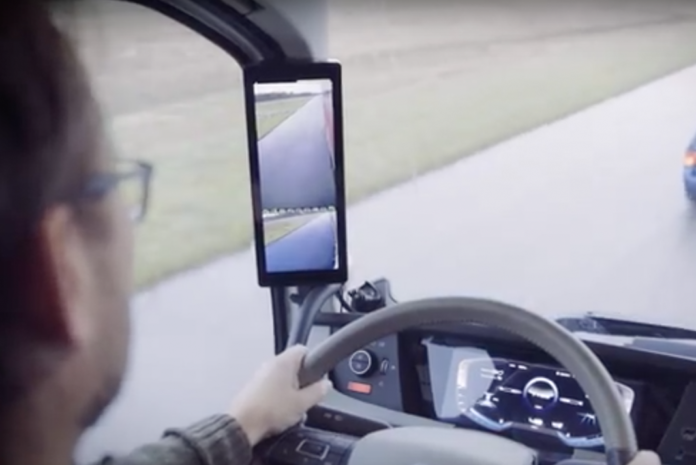Federal transportation agencies announced plans to pay truck drivers and motorists who participate in a study looking at the use of camera systems in place of traditional rearview mirrors.
In a Notice and Request for Comment to be published in the Federal Register on May 24, the National Highway Traffic Safety Administration (NHTSA) and the Department of Transportation (DOT) announced plans to use participants from the trucking community and other members of the public as part of a multi-year study on the safety of the use of video cameras to replace traditional rearview mirrors.
The notice delved into detail on what the study would focus on:
The research will involve human subjects testing involving driving instrumented vehicles on a test track and public roads. Testing will also be performed with participants seated in a stationary vehicle while detecting nearby objects using a vehicle’s mirrors or a camera-based system. Study participants will be members of the general public and participation will be voluntary and compensated. The goal is to characterize drivers’ eye glance behavior, visual object detection performance, and driving performance while operating a vehicle equipped with traditional outside mirrors versus a vehicle equipped with a camera-based visibility system in place of vehicle mirrors. Stationary examination of drivers’ ability to detect objects near a vehicle will also be conducted.
DOT is inviting both licensed motorists and truck drivers who have a valid CDL to participate in the study if they are 25 to 65 years of age, inclusive, are in good health, and do not require assistive devices to safely operate a vehicle and drive continuously for a period of approximately 3 hours. Those chosen to participate will operate a test vehicle equipped with traditional rearview mirrors, a camera-based rearview mirror system, or a combination of the two.
The notice also summarized concerns shared by the public during a 2019 NHTSA request for comment on rear-vision camera systems:
- Camera-based rear visibility systems’ displays will make driving unsafe, as compared to traditional mirrors.
- Drivers will not be able to easily acclimate to using the visual displays of camera- based rear visibility systems and different display locations (if applicable).
- Camera-based rear visibility systems and new technology will further remove the human from the driving task.
- Concerns about camera-based rear visibility systems’ ability to function reliably and that cameras requiring power can fail unexpectedly and cause a lack of awareness of the drivers’ surroundings, while traditional mirrors cannot.
- Concerns camera-based rear visibility systems would be more difficult for law enforcement to determine if they are working correctly, as compared to traditional mirrors for which damage can be easily determined.
After the notice is published in the Federal Register on Monday, learn more at this link.
